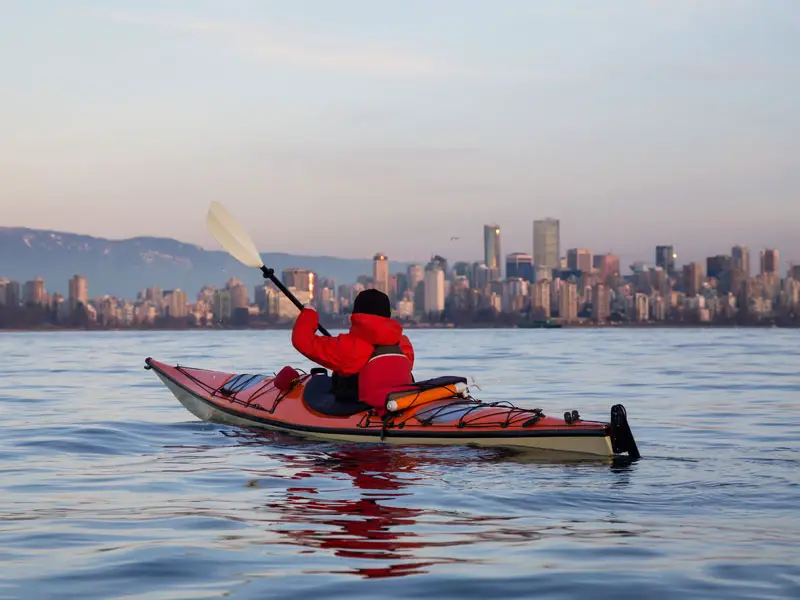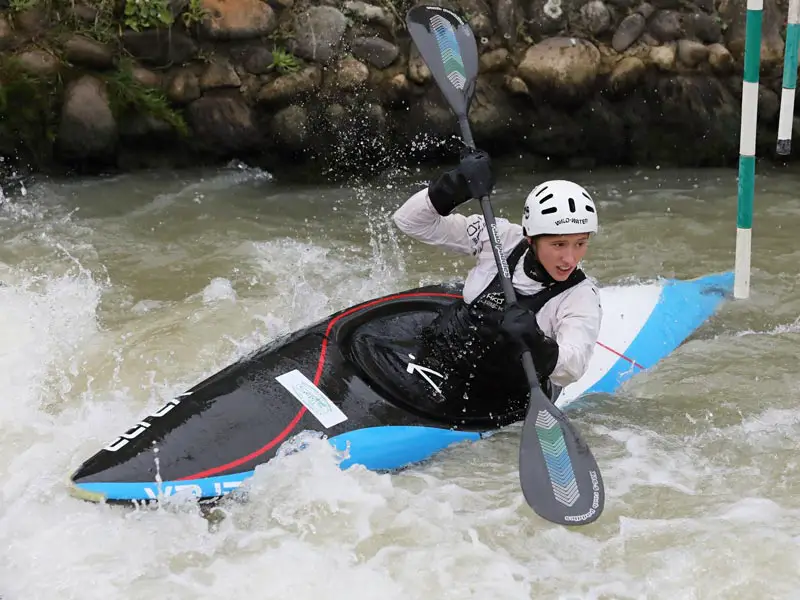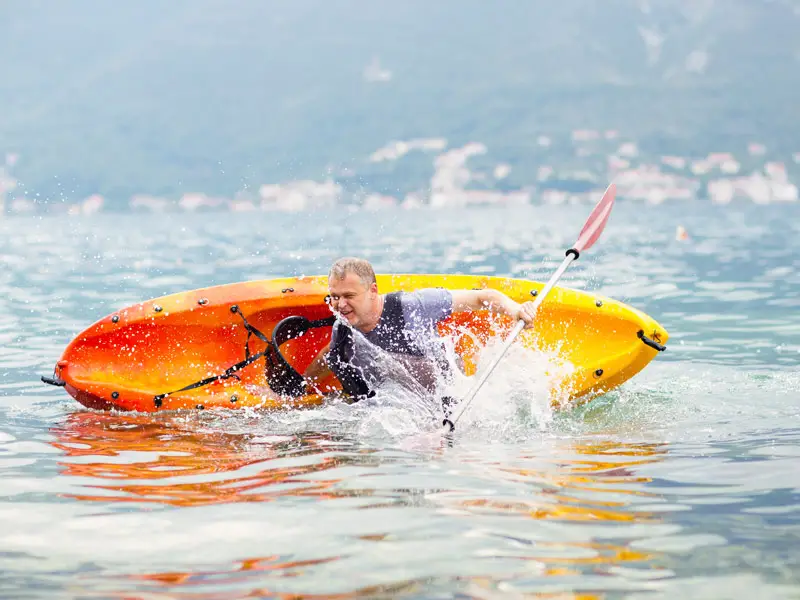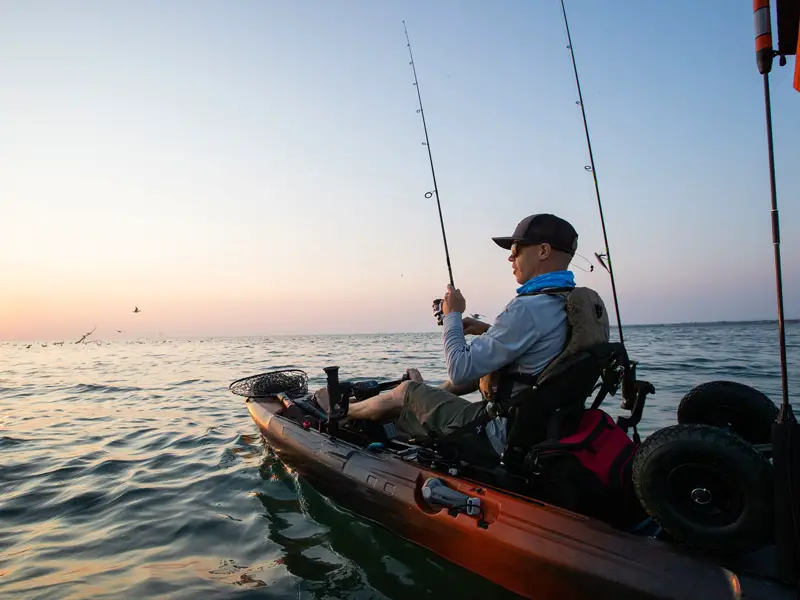The process of choosing a kayak can be complicated and overwhelming without a firm grasp of the standard terminology. Especially for beginners, it can be difficult to recognize what feature you are looking at or why that feature is important. One of the most significant decisions you will have to make whether to choose a sit on top kayak or sit inside kayak.
The principal difference between sit in and sit on top kayaks is the part of the kayak called the cockpit. Sit in kayaks have enclosed cockpits while sit on top kayaks do not. As a result, these two different types of kayaks are better suited for different activities.
Sit on Top vs Sit In Kayaks: Similarities
Despite their start differences, sit in and sit on top kayaks share many characteristics. So, let’s start with the similarities. Paddling and steering are the same for both types of kayaks, meaning that if you can operate one type of kayak, you can operate the other. The terminology surrounding both types of kayaks is also the same. The front is still the bow; the back is still the stern, and the top is still the deck.
Sit on Top vs Sit In Kayaks: Differences
As previously mentioned, the difference between a sit on top and sit in kayak is all about the enclosed cockpit, or lack of.
Nonetheless, the differences between sit on top and sit in kayaks means that choosing the right kayak is absolutely essential. Choosing the wrong kayak could even be dangerous depending on the situation. Sit in kayaks have features that make them easier to paddle, faster, and better for poor weather. Despite all this, sit on top kayaks are still the top choice for fishers and recreational kayakers whose needs are better catered to by sit on top kayaks. The decision between a sit in and sit on top kayak is one that you should make after taking all of the relevant factors into consideration.
Sit in vs Sit on Top Kayaks: Factors to Consider
- Safety– Safety should always be your number one consideration. What kind of boat do you need to stay safe on your trip, given the conditions?
- Purpose– Why are you looking to kayak? Is it just for fun or is it something where you would need a specific kind of boat?
- Conditions– What kind of water are you going out on? Is it choppy or calm? Is it warm or cold? Is it raining or windy outside?
- Availability– Sometimes you have to choose between what’s available even if there is another option that you would prefer. That’s assuming your options are all safe of course!
- Budget– Sit in kayaks tend to cost a bit more, so if all else is equal, it might make sense to lean towards a sit on top kayak, if only to save a few dollars.
When to use a Sit in Kayak
Cold Waters
Winter weather isn’t enough to keep the most dedicated boaters off the water. That being true, when partaking in any activity in cold water, safety should be a top priority. When kayaking in cold water, the choice between a sit in and sit on top kayak is a safety one.
A sit in kayak with a spray skirt will allow you to keep cold water out of your kayak and protect your lower half from the wind. A sit on top kayak cannot prevent cold water from getting on you and potentially causing discomfort or hypothermia. Always remember that water causes hypothermia more quickly than air. In water under 60°F, symptoms of hypothermia can start to set in in just 15 minutes.

Long Distance Trips
Even in warm waters, where hypothermia is of no concern, it is still uncomfortable to stay wet for extended periods of time. That is one of many why kayakers often prefer sit in kayaks for long trips. Sit in kayaks often have more comfortable back and footrests that allow for longer distance paddling in comfort.
Sit in kayaks tend to be lighter, making it easier to paddle one for hours on end and easier to carry around a camp site for those multi-day trips. This lightweight construction also makes them easy to maneuver, a welcome feature when entering a busy harbor after a long day of paddling. Furthermore, sit-in kayaks tend to have much more dry storage than sit on top kayaks.
White Water
White water kayakers use sit in kayaks, and for good reason! Sit in kayaks have superior stability and can be outfitted so it moves with your body, preventing it from flipping in even the roughest waters. This increased control also allows experienced kayakers to roll the kayaks when they do end up flipped, which is much faster than falling out and climbing back in.
Despite its stability, white water should be reserved for trained experienced kayakers, especially with sit in kayaks. Often, kayak rentals on rivers will be only sit on tops, because sit in kayaks can be difficult to escape in flowing water for the uninitiated amateur paddler.

Racing
If speed is your goal, then go with a sit in kayak. All of the best racing kayaks today are sit in kayaks. They are lighter, thinner, easier to control, and as a result, go faster. However, there are limits on how fast a kayak will go. Check out How Fast Can You Paddle A Kayak to learn more.
When to use a Sit On Top Kayak
Easy Escape for Beginners
Many boaters enjoy sit-in kayaks for their stability. Unfortunately, that same stability can work against boaters, if they happen to find themselves up-side-down underwater.
With sit on top kayaks, the boater will automatically fall off if the kayak flips. The same is not always true for a sit in kayak, especially if the boater is using a spray skirt. The benefit of a sit on top kayak is that you don’t need any technical training to escape in case your kayak flips. For this reason, sit on top kayaks might be the safer choice for beginners heading into choppy waters. That being said, still, be sure to wear a life jacket.
If you do plan on venturing into rough waters with a sit in kayak, make sure to receive appropriate instruction before setting out. Many local kayaking clubs and organizations will host this kind of skills-building course in a safe and secure environment, so you can practice safely rolling your kayak before it becomes a life-or-death situation.

Need for Ease of Use
While sit in and sit on top kayaks are both easy to paddle, sit in kayaks can be hard to enter and launch. This is especially true for those who have mobility issues or just aren’t in the best shape. It is especially difficult to reenter a sit in kayak from deep water, requiring a considerable amount of strength and balance that even experienced kayakers occasionally struggle with.
Fishing
While sit in kayaks have more storage space, it is not easily accessible. That means that if you need access to your supplies on the water, for example, access to tackle while you are fishing, you might need a sit on top kayak.
Sit in kayaks don’t allow for the range of motion fishers need. For this reason, most fishing kayaks are sit on top kayaks. Many sit on top kayaks are even specially designed for fishers, with rod holders and storage for your next catch.

Need for Customizability
If you are using a kayak for a unique purpose and there aren’t many suitable kayaks on the market. Sit on top kayaks might be a good place to start. For one, there is simply more diversity in sit on top kayaks. You will have a wider array to choose one and are more likely to find one that fits your needs.
Furthermore, there are more options to customize a sit on top kayak than a sit in kayak. There are plenty of companies out there who will add a motor, rutter, more storage space, or even cupholders to your sit on top kayak than your sit in kayak. This is not to say that you cannot customize a sit in kayak, but just a note that it is harder to find a company that will do it.
Sit on Top vs Sit In: Making the Decision
These are a whole lot of scenarios to consider when deciding between a sit on top and a sit in kayak. Ultimately, you will have to weigh your needs and values to make the right choice based on your specific situation. If you are still confused, it might be worthwhile to reach out to your local branch of the American Canoe Association to try and connect with an experienced kayaker that can hear your concerns and give you their honest advice.
If you are shopping for a kayak in person, salespeople can also be very helpful when it comes to choosing a kayak. Many will let you test out a bunch of kayaks before making a decision about which feels most comfortable.
Whichever choice you make, take comfort in knowing that both sit on top and sit in kayaks will allow you to get outside, explore the water, and gain a new hobby.
